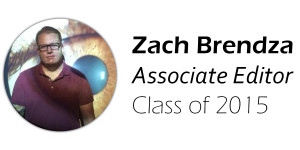Spinning Plate offers home, canvas for artists
Spinning Plate Artist Loft is a complex with apartments, but it’s not an apartment complex. It’s like saying Woodstock was a musical festival. Describing either with such conventional phrases cheapens their essence — they’re worth more than that.
5720 Friendship Ave. has two doorways, one on Friendship that connects to the foyer, one on Baum Boulevard that transports you from gridlock to gallery. You can choose to exit or enter the 55,000 square foot former Chrysler dealership, but the majority frequently choose the latter. And seldom the former.
The wait list for Spinning Plate is six to eight months, although a resident can leave the complex with 30 days’ notice — but that doesn’t happen much. Once a person turns into a tenant, they don’t leave, says property manager Jennifer DeCerb. The facility is comprised of 37 apartments. Like those who inhabit the living work spaces, each unit is unique, according to DeCerb, ranging from a one room 600 or 700 square foot studio to a 2,000 square foot three bedroom spread through three floors.
The complex is devised between three floors, the first floor sharing purpose between displaying work of non-residents and residents in the gallery and living quarters for those that do reside there. But while they each have their own looks and quirks, each floor is an extension of the first floor showroom, decorated with paintings, sculptures and the like.
The target tenant demographic are those with low income, with an “artist preference.”
DeCerb says 95 to 99 percent of the occupants are from the art world. The artists’ residence was started with a commitment to provide housing and workspace for artists in Pittsburgh and was “one of the first projects in the city that specifically targeted artists,” according to Linda Metropolis, one of Spinning Plate’s foundesr. Developed with low income housing tax credit, the facility is obligated to keep below 60 percent of the median area income.
“Right now, if [one person] moved in and made 27 or 28 thousand, they would make too much to qualify. People’s income can move up when they live in, but must be considered low income when moving in,” Metropolis says.
That program that keeps Spinning Plate’s rent at a low rate is one of its largest assets. It keeps 16-year resident Richard Claraval around. The artist thinks his neighbors feels the same, as well.
“If we lost that, I would say almost all the residents would be gone. Our rent would go up three times, at least,” Claraval said. “We have a great situation here.”
Claraval was the first resident to sign up for Spinning Plate when it opened back in 1998. He had the lay of the loft: whatever one bedroom was to his liking. He settled on Apt. 208, a 24 x 20 space with 14-foot ceilings, five huge windows, a large studio and an L-shaped entryway. In his space, he creates sculptures, charcoal drawings and an array of paintings. A brief tour of the building will introduce you to Claraval, not by a formal meeting but his work which decorates much of Spinning Plate’s quarter’s, from his “The Prison of My Youth” sculpture in the foyer, to his wall-sized paintings on the second floor.
But one of the biggest amenities for him isn’t in his own personal space, it’s the gallery. Claraval has been manager of Spinning Plate’s galley and has at least one solo and one group show of his own in the space. When his art isn’t center stage, someone else’s is the focus.
“[The] gallery is becoming a pretty well-known spot” in Pittsburgh for art, Claraval says, having an exhibition booked every month, year round. It’s something that he and co-manager and resident Donnie Polmeroy work hard to keep running.
The hard work of many keeps the loft running and got it started. What was a $5 million project in the late ‘90s would be somewhere around $12 million today, according to Metropolis. The building wasn’t expensive and no one wanted to be in East Liberty at the time, she said. When Whole Foods came to the neighborhood, they saw what Spinning Plate was doing. They took it as “a positive sign” that artists were in the neighborhood.
“Artists usually are recognized as being the first risk takers,” Metropolis says. “If you find artists in the community, you can assume a positive future that’s coming for that community.”
As the artist loft continues to grow up, turning 17 later this year, the main goal for Spinning Plate is to continue its mission of providing a haven for those creating art in whatever way that might be.
“[We’re going to] keep it operating and full,” Metropolis says. “[We’re] going to continue do exactly what we’re doing.”

